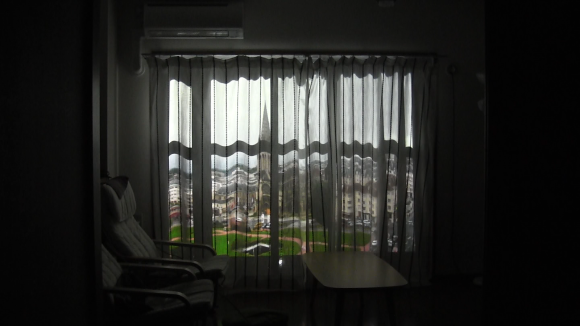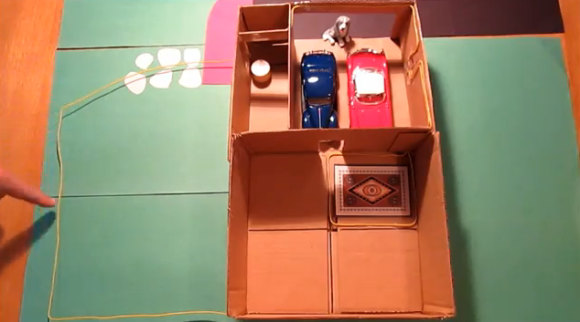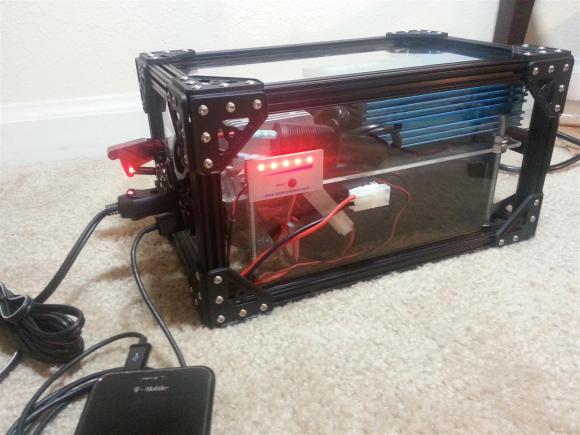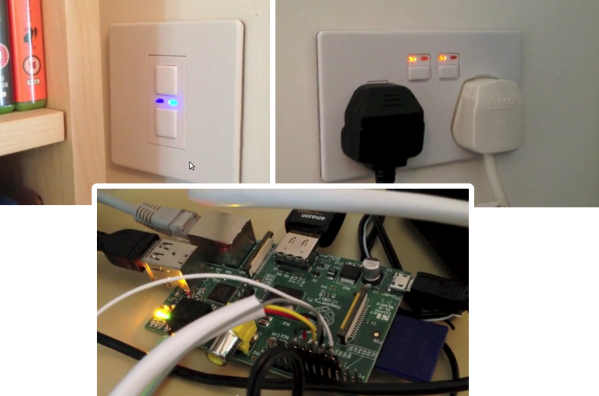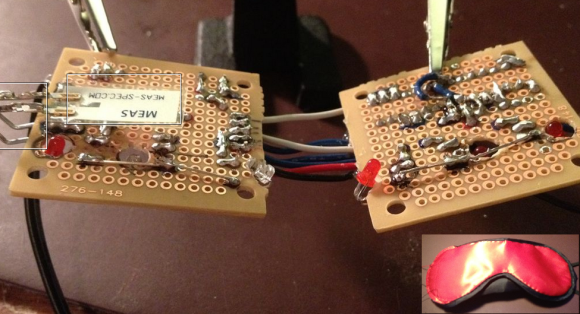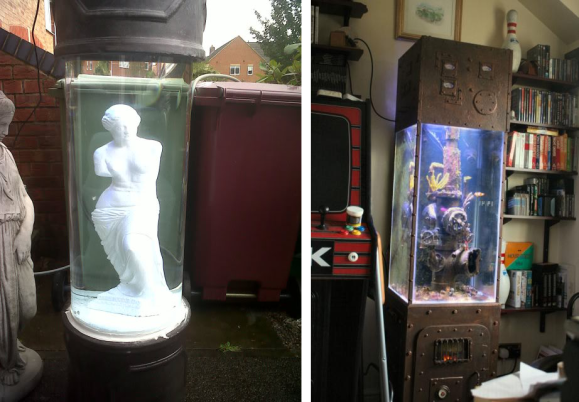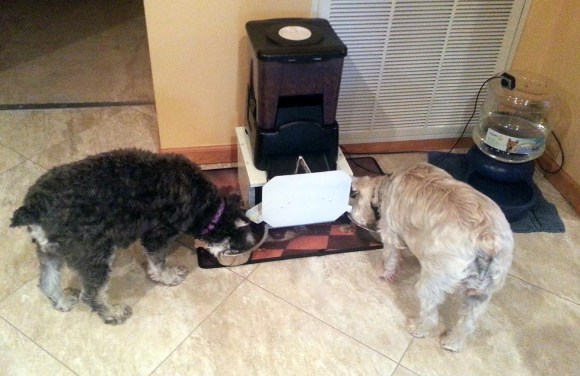
[Ben Miller] and his dad combined forces to create this automatic dog feeder. It not only keeps their two schnauzers happy, but gives them peace of mind as they can double-check that he feeding happened by pulling up an image on the Internet. Make sure you make it through all three posts of the build to get the entire picture.
The project started with some research which turned up a project that used a commercially available automatic feeder. That one used Arduino, but because of the cost the board plus a WiFi shield is a bit high, [Ben] went with a Raspberry Pi and a USB WiFi dongle instead. The Pi is much more powerful and adds the functionality for capturing images via a webcam.
After a convoluted process of connecting the Pi to the existing button traces on the automatic feeder it was time to start coding. The system runs from a Perl script which monitors a Gmail account for remote commands (in addition to a regular feeding schedule). The final touch is a bit of mechanical engineering which splits the output into two bowls so the dogs each have their own serving.
We still use the Autodine we built several years back but its single-serving limitation has always kept a second version on our project list. Hopefully seeing a well-executed system like this will motivate us to get building!

